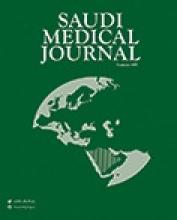REVIEW ARTICLE
Current techniques of lamellar keratoplasty for keratoconus
Newer forms of lamellar keratoplasty techniques have emerged in the last decade or so revolving around the concept of targeted replacement of diseased corneal layers. These include anterior lamellar keratoplasty (ALK) techniques that aim to selectively replace diseased corneal stroma. Anterior lamellar keratoplasty surgery has a distinct advantage over penetrating keratoplasty (PK) in that it minimizes unnecessary replacement of the unaffected healthy endothelial layer thereby almost eliminating the risk of endothelial rejection, a major cause of graft failure in PK. Overall, it provides increased life expectancy to the graft and with advancements in the surgical technique and instrumentation for ALK, the visual outcomes are now comparable if not better to standard PK. There are several forms of ALK procedures that have evolved in keratoconus. This article reviews the various emerging techniques of anterior lamellar surgery, its indications and visual outcomes and, to emphasize the shift from PK to ALK in the management of keratoconus.
Biomicroscopic examination one month after custom excimer laser-assisted lamellar keratoplasty in a 31-year-old keratoconus patient. Sixteen interrupted 10-0 nylon sutures and a clear cornea are visible
see page 127
ORIGINAL ARTICLES
Transcutaneous bilirubin measurement in healthy Saudi term newborns
Measurement of transcutaneous bilirubin (TcB) in newborns is one of the most frequently laboratory tests performed in the hospital. The TcB measurement aims to reduce the number of painful blood sampling. This study by Alsaedi evaluates the accuracy of TcB in healthy, jaundiced term newborns. There were 665 paired total serum bilirubin (TSB) and TcB measurements obtained from 665 infants. There is a significant correlation between TcB and TSB with high negative predictive value. The study concludes that TcB measurement provides an accurate estimate of TSB in healthy newborns, and it can be used as a screening method before home discharge. The TSB measurements can be reserved for those with high TcB levels.
Relationship between transcutaneous bilirubin and total serum bilirubin levels
see page 142
Late-presenting developmental dysplasia of the hip in Jordanian males. A retrospective hospital based study
Samarah et al describe the late presentation of developmental dysplasia of the hip (DDH) in Jordanian males. In this retrospective study, the authors evaluate the risk factors, clinical and radiological findings in 43 male children with DDH. Cesarean delivery is significantly associated with an increased risk of hip dislocation in Jordanian males while normal delivery is significantly associated with acetabular dysplasia. No predictive risk factors are found in a high percentage of patients with DDH. The authors call for a well organized screening program for early diagnosis of these cases and decrease the burden of late diagnosis and treatment of DDH.
see page 151
CASE REPORT
Intestinal lymphangiectasia in children. A favorable response to dietary modifications
In this report, Isa et al presents 2 patients with primary intestinal lymphangiectasia (PIL), a congenital disorder characterized by dilatation of intestinal lymphatics. The PIL is a very rare disease with only 200 cases reported. Patient with PIL usual presents with pitting edema, ascites, pleural effusion, and diarrhea. The characteristic laboratory, radiological, endoscopic, and histopathological findings helps in the final diagnosis. Although therapeutic approach has gained a lot of attention lately, few studies have considered the therapeutic effect on PIL patients. The authors conclude that dietary modifications have a favorable effect on the clinical status of these patients.
A pitting edema (arrow): A) gentile pressure on the foot dorsum; and B) persistent skin depression in a 2-month-old infant with primary intestinal lymphangiectasia
see page 199
- Copyright: © Saudi Medical Journal
This is an open-access article distributed under the terms of the Creative Commons Attribution-Noncommercial-Share Alike 3.0 Unported, which permits unrestricted use, distribution, and reproduction in any medium, provided the original work is properly cited.









